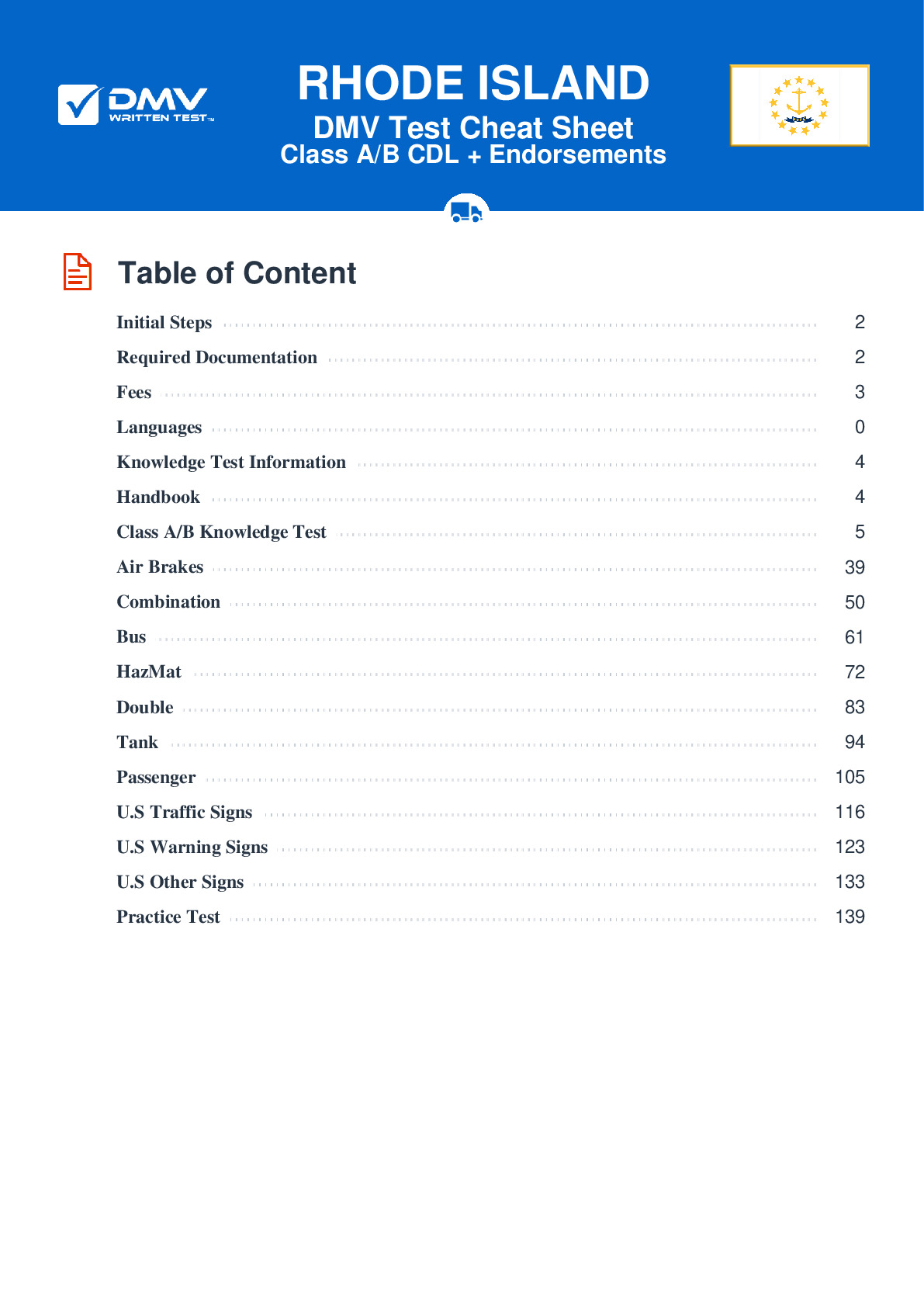Air Brakes
This endorsement is required for driving a vehicle with air brakes. To receive this endorsement, applicants must pass a written test. The test consists of 25 multiple choice questions. Each question has three answer choices. To pass, the applicant must answer at least 20 questions correctly. Test questions come from the Rhode Island Commercial Driver License Manual. Questions come from the chapter covering: Air Brakes. The Air Brakes endorsement may be used with the Class A, B or C CDL.
Number of Question
Passing Score
19. A dual air brake system:
Explanation
A dual air brake system is made up of two separate air brake systems. The systems share a single set of brake controls, but each has its own air tanks, hoses, and lines. One system typically operates the regular brakes on the rear axle or axles while the other system operates the regular brakes on the front axle.
20. When experiencing cold weather, be sure to check your vehicle's alcohol evaporator:
Explanation
An alcohol evaporator can help prevent ice from building up in an air brake system. In cold weather, the evaporator should be checked and refilled every day.
21. What color light indicates a vehicle's ABS is not working?
Explanation
On vehicles with Anti-Lock Braking Systems (ABS), yellow malfunction lamps alert the driver to ABS malfunction.
22. When the spring brakes are on, you should never:
Explanation
Never push down the brake pedal while the spring brakes are activated. The combined force of springs and air pressure could damage the brakes.
23. During a static leakage test, what is the maximum leakage rate that is safe for a double combination vehicle?
Explanation
When performing a static leakage test on a double combination vehicle with air brakes, the leakage rate should be no more than 3 psi in one minute. If the air leaks from the air brake system at a quicker rate, the vehicle should not be driven because something likely needs to be repaired.
24. In a vehicle with dual air brakes, a leak in one system ____ the second system.
Explanation
A dual air brake system is made up of two separate air brake systems. If there is an air leak in one system, it may not affect the other.
25. Why should you regularly drain the air tanks?
Explanation




